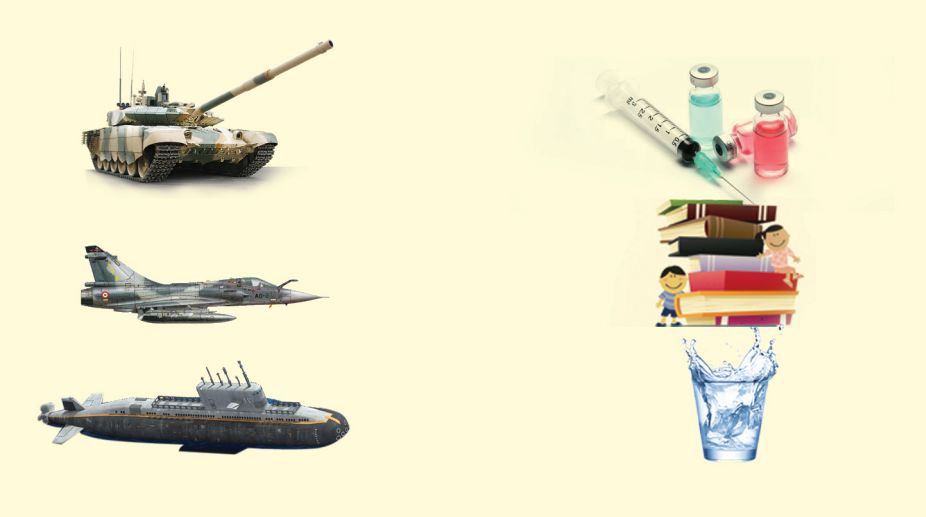Asia hit hardest by climate, weather disasters in 2023: UN
According to the report, in India, severe heatwaves in April and June resulted in about 110 reported fatalities due to heatstroke.

Asia, development
Name any indicator of human development, and you are likely to find the South Asian region somewhere at the bottom of it. While there can be many reasons for this, one important reason is the heavy direct and indirect expenditure on procuring and producing arms and ammunition. This trend seems to be escalating as various kinds of internal violence as well as tensions with neighboring countries lead to a growing feeling of insecurity, one that is whipped up by powerful forces to justify the increasing expenditure on arms at a time of shocking denial of basic needs.
The more insecure any nation feels, the more likely it is that its military expenditure will increase. But South Asia is a region where there is shocking deprivation in the context of basic health services and trained health personnel, under nutrition, malnutrition and even denial of clean drinking water to millions and millions of people. School education is still not available to millions of children.
Infact, South Asia is particularly vulnerable to poverty and deprivation as this region has 21 per cent of the world’s population but only three per cent of its land. In addition, a major part of this region suffered from colonial exploitation for nearly two centuries. Hence the need for concentration of attention and limited resources for removing or reducing poverty and deprivation is more acute here.
Advertisement
What is more this region has been identified by experts to be highly vulnerable to climate change and related threats. Due to this factor catastrophic disasters are likely to increase in the near future. Hence the need to devote more resources and efforts for climate change adaptation and mitigation is increasing all the time.
However, such priorities can be easily pushed aside when there is increasing threat perception about war and the entire discourse is mostly dominated by this. In this respect while Nepal and Sri Lanka have done well to move away from civil war type conditions (although several problems remain) tensions and hostilities between India and Pakistan have been escalating with worrying regularity.
While actual war is likely to be unbearably costly in terms of human life, even increasing threat perception can be very costly by removing resources from bread to guns. According to data given by the South Asian Human Development Report, the cost of one tank equals expenses of vaccination of four million children, the cost of one Mirage 2000-5 airplane equals one year’s primary education expenses of three million children, the cost of one submarine equals the cost of providing clean drinking water to 60 million people for one year. (See chart below).
A report by Amnesty International and other social organizations titled Guns or Growth says that escalating military expenditure can be particularly harmful when it takes the form of an arms race. This report says, “The cumulative impact of arms spending is also a cause for concern, particularly in the context of arms races. Research shows that states respond in kind to military spending by the neighbors-even non-hostile ones. Arms races in the context of developing countries can have particularly severe consequences for government spending allocations.” In fact, in the context of South Asia the costs of the arms race are actually much higher than what is revealed by the official arms data as many aspects of this expenditure remain hidden to a lesser or greater extent. In a region which has two nuclear weapon armed countries, many aspects of the development, maintenance and research of such weapons remain hidden.
Clearly the welfare of the people of South Asia is very closely tied up with the establishment of peace so that on the one hand the most terrible distress linked with actual war is entirely avoided and at the same time the possibility of heavy arms expenditure is greatly reduced. South Asia needs a strong peace movement which functions with continuity on several fronts, one of which is to reduce the expenditure on arms and ammunition so that more funds become available for essential development and welfare needs. Not just the official arms budget but also the huge purchases of arms and ammunition by various persons, groups, militias and mafias need to be curbed strictly.
Advertisement